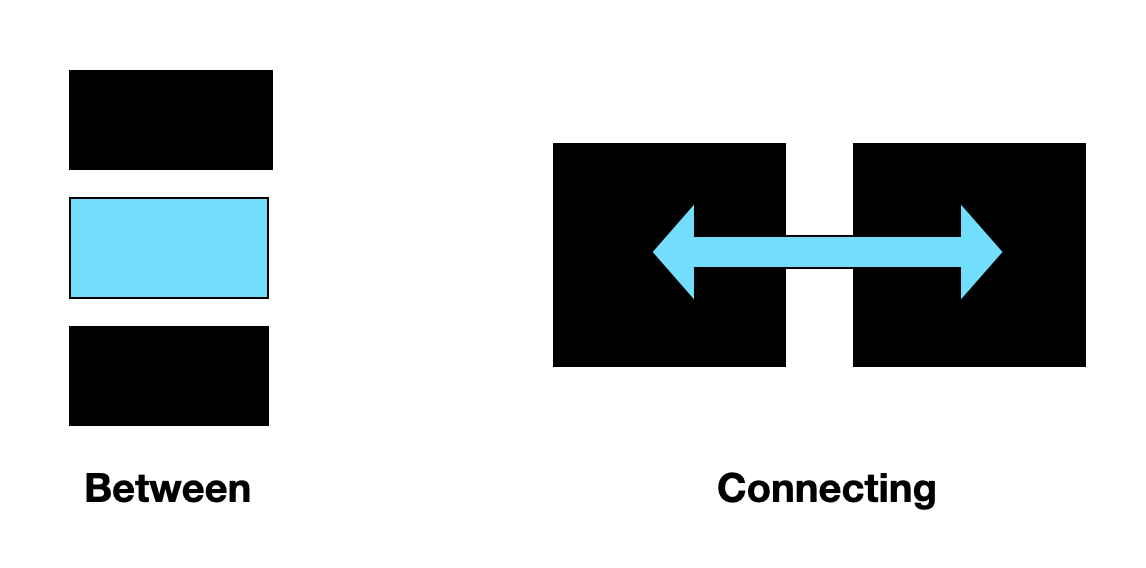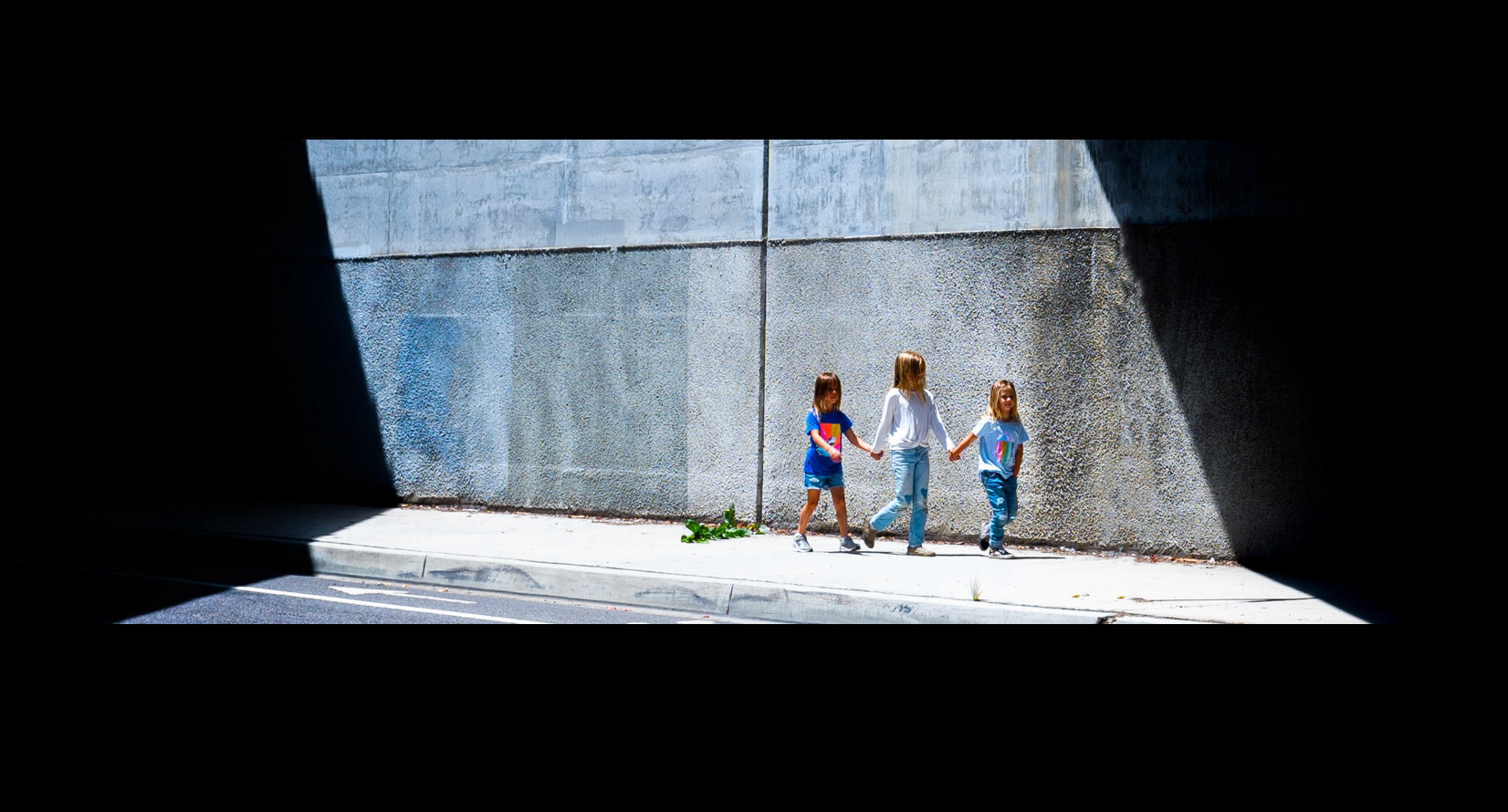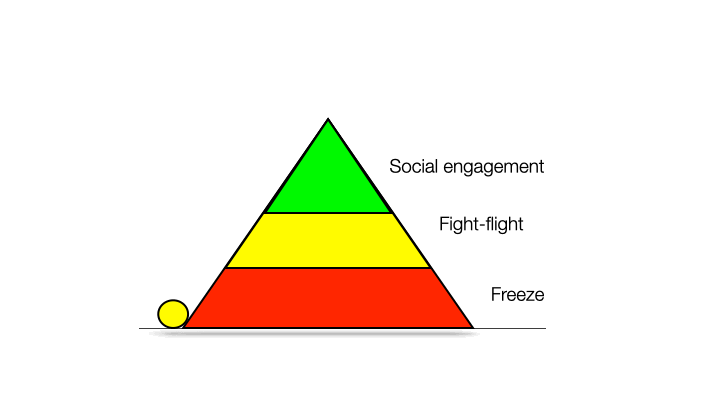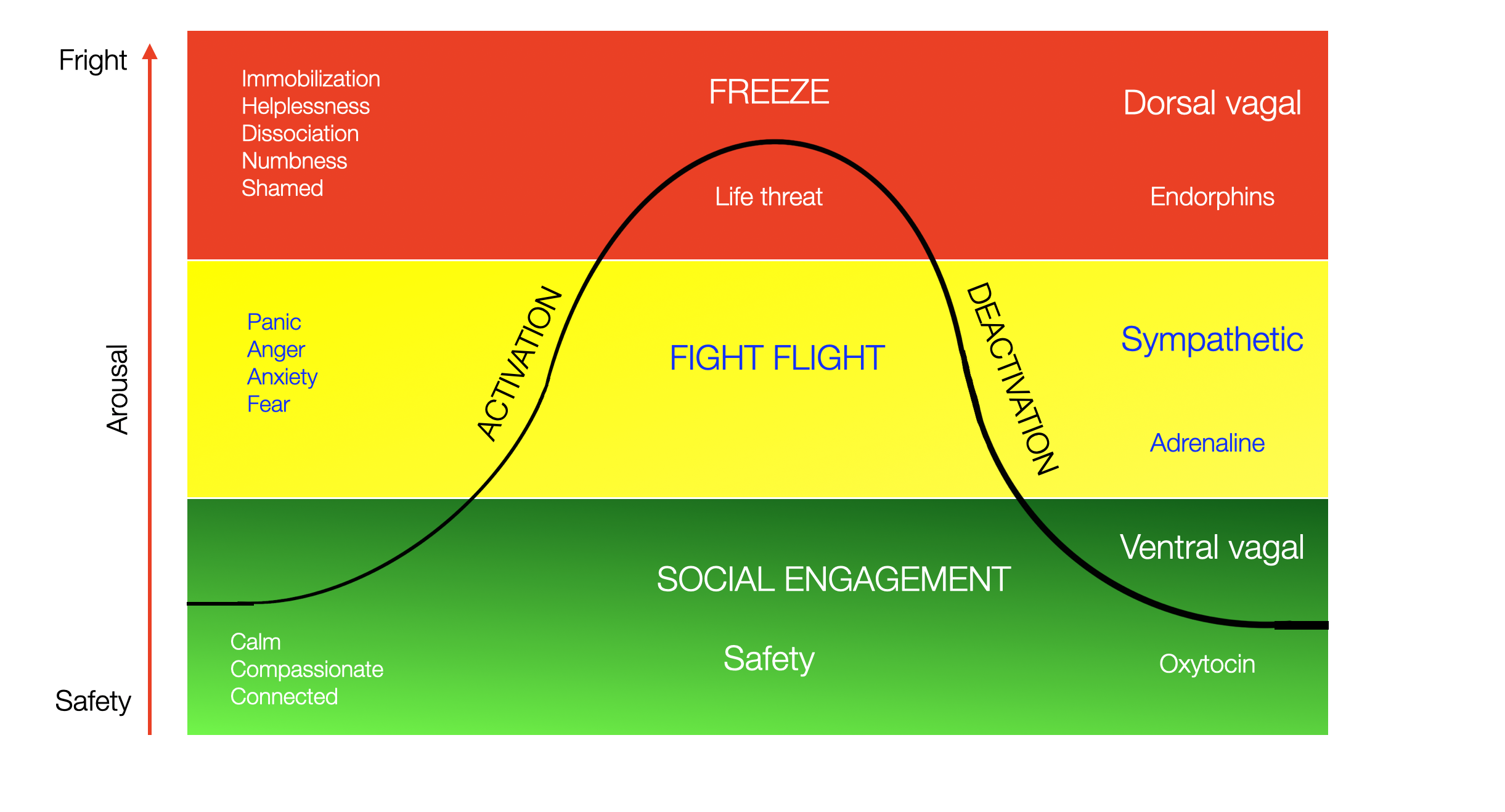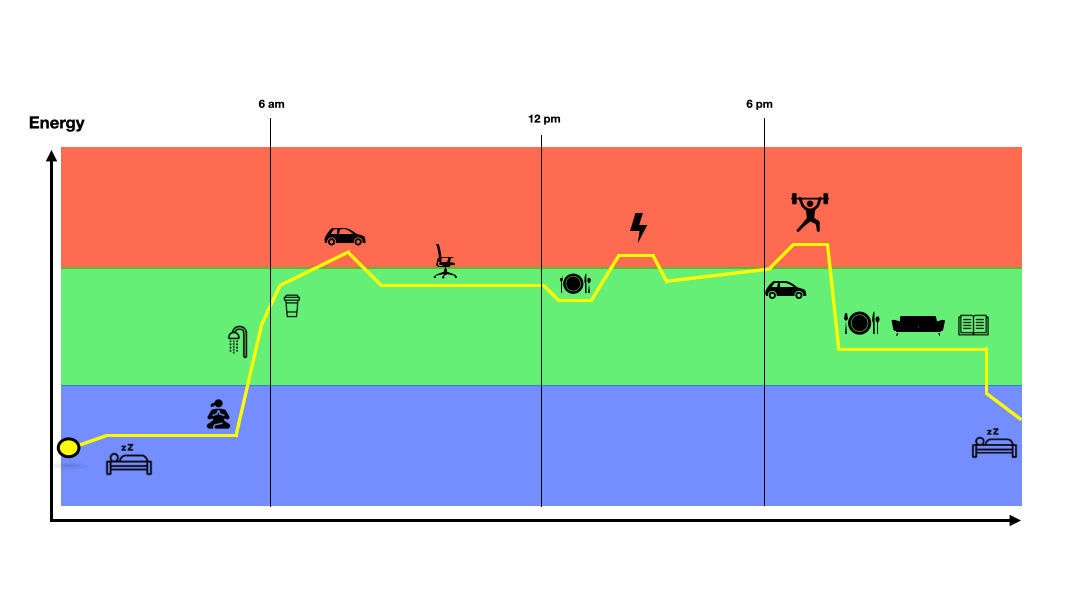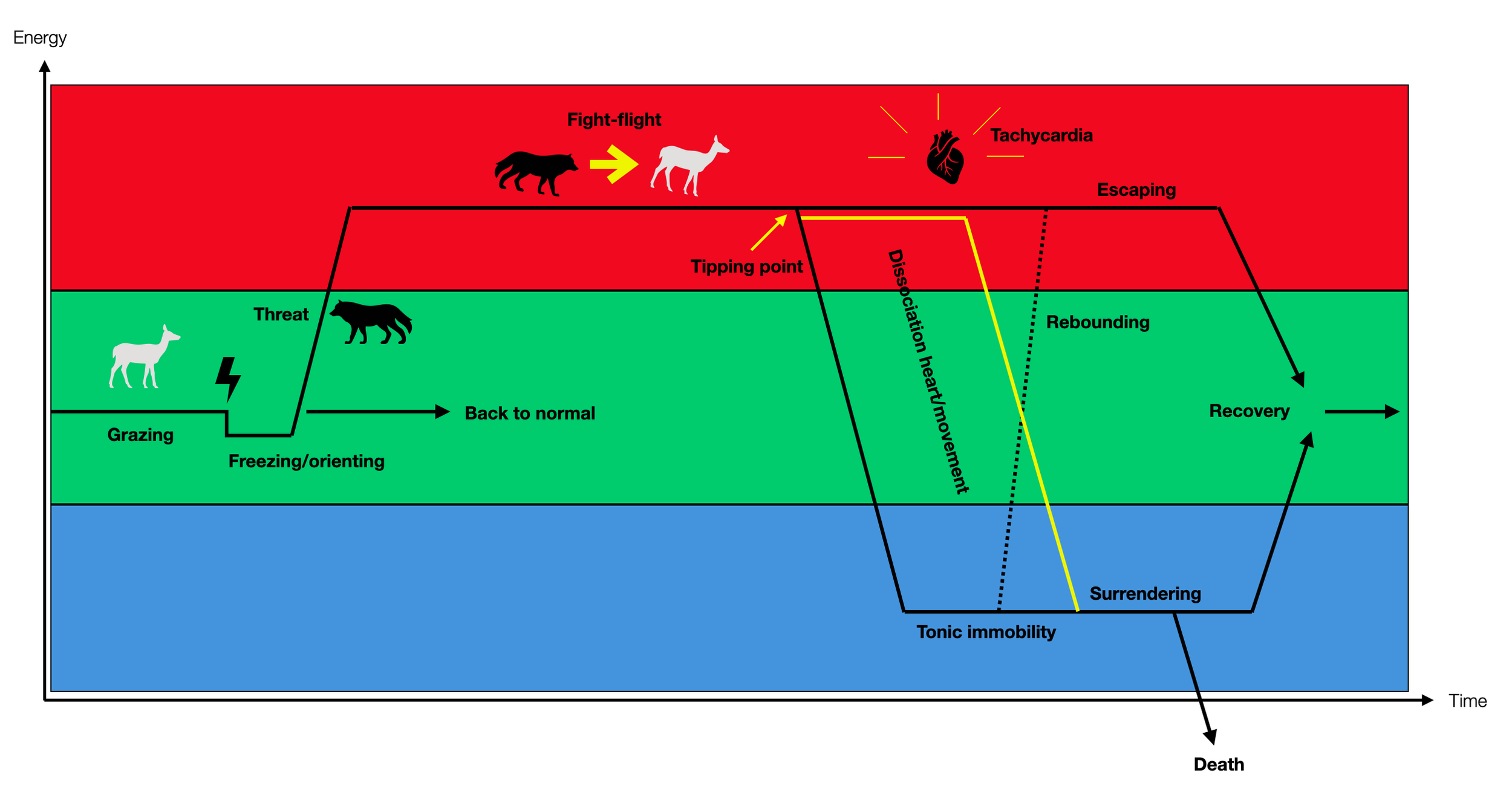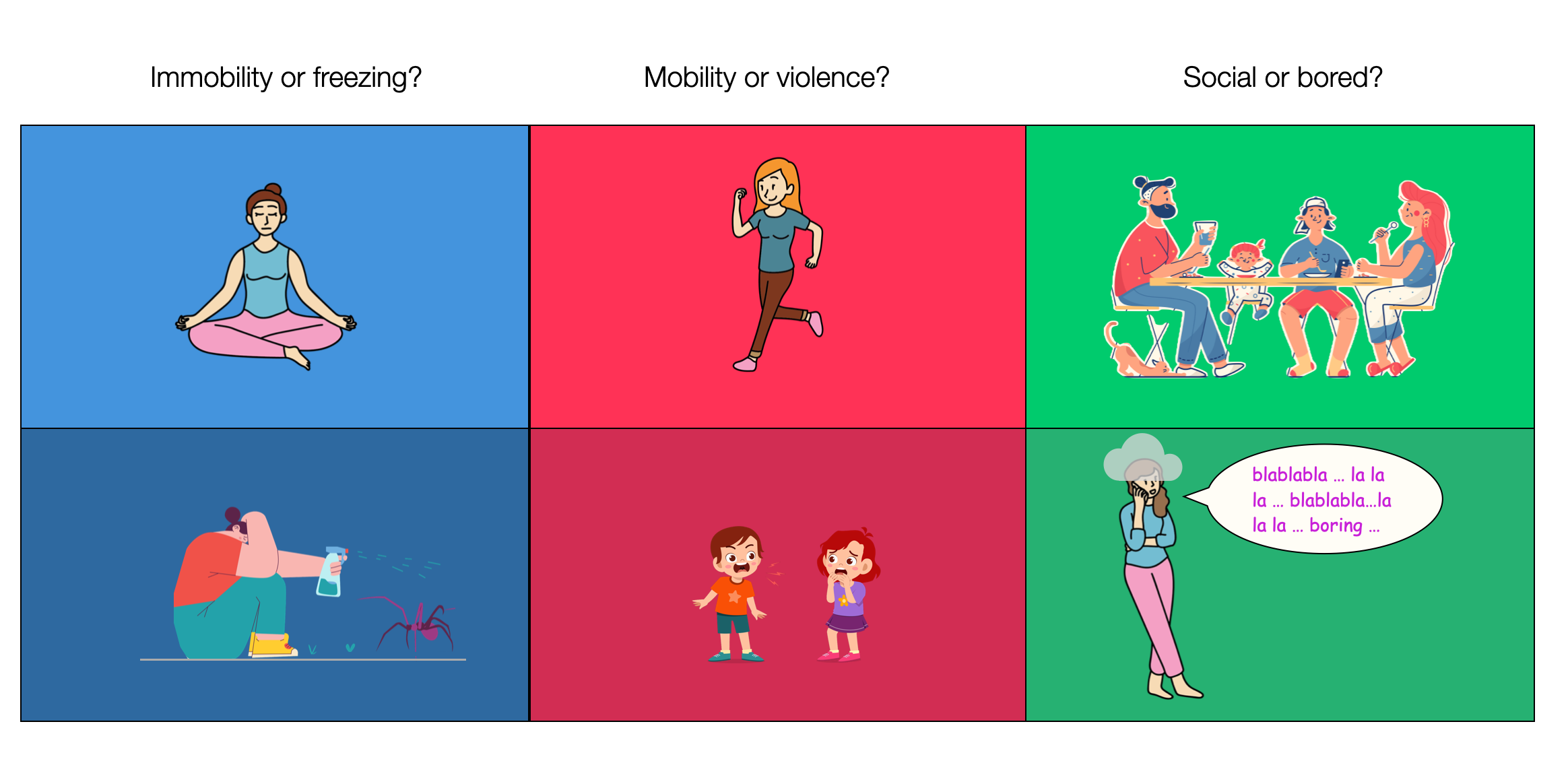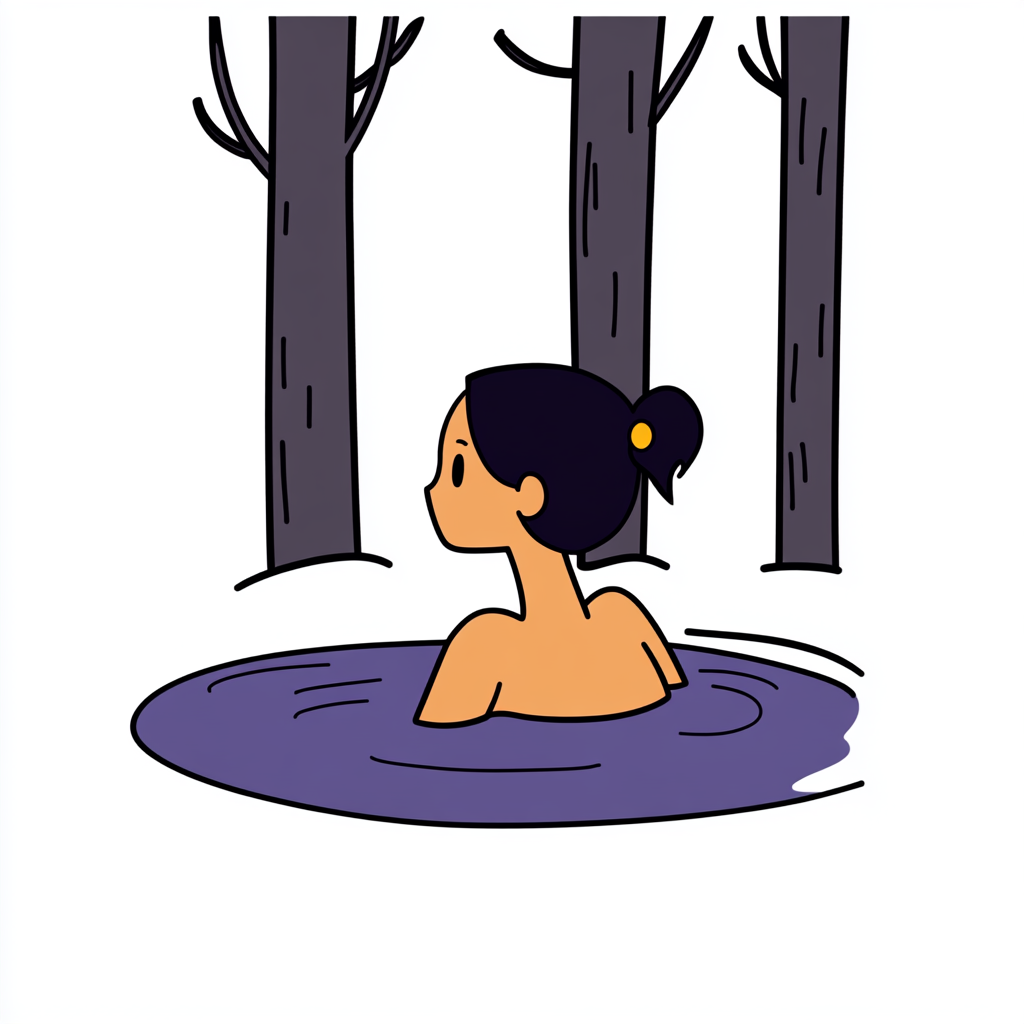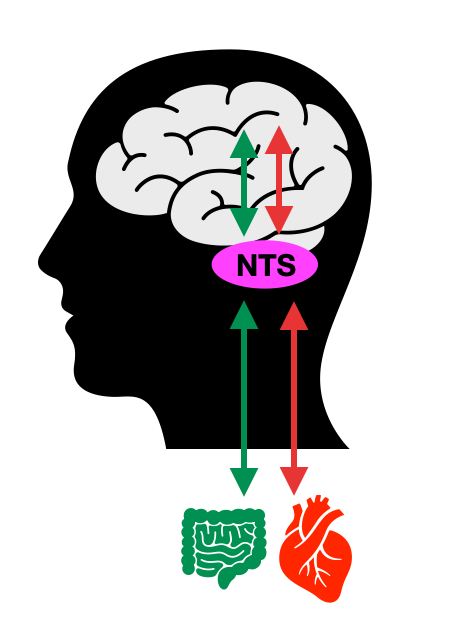5.2.0
Energy, Life, and Trauma: The Three-State Model
Previous chapters have challenged the PVT. Here, I'm offering a glimpse of an energy model I've been developing over the past decade. It will be the subject of a forthcoming website (Three-State).
5.2.1
The Three-State Energy Model
Based on an energetic perspective, the Three-State Energy Model is an alternative to the threat-based Polyvagal Theory. This approach is free of evolutionary and psychological hierarchy. It adheres to a strictly energetic view and is based on the concept of “energy states” we know from nuclear physics. In an extended sense, these energy states can be metabolic, behavioral, psychological, biochemical, and more.
5.2.2
A Third Energy State
Between Ergotropic and Trophotropic
Classically, physiologists contrast ergotropic (sympathetic or fight-flight) with trophotropic (parasympathetic or rest and digest). It is a dualistic model. However, “rest and digest” refers to two different energy levels: resting is passive, and digestion is active. With a three-state model, we avoid this problem. Here are these three levels or states:
The high-energy (ergotropic): robust movement, fight, flight, effort, heat, excitement, violence, exercise, and force.
The mid-energetic (mesotropic) moderate movement (e.g., sitting, strolling) and social activities (typically sharing a meal and talking together).
The low energy (pausotropic): immobilization (e.g., meditation), rest, and sleep.
Important: This description is not necessarily associated with a threat!
Mesotropic & Pausotropic: Definitions
I propose here two neologisms to describe these three states better.
Mesotropic (Greek root μεσο, meso = middle) means "tending toward the middle.” The root meso, like its Latin counterpart, medium, has a double meaning. Meso is a state between high and low — an intermediate, i.e., in the middle of a group — but also as a connection, a tie, or a link. In modern Greek κοινωνικά μέσα, koinônika mesa = “common media” is the translation of social media.
Pausotropic (Greek root παυσισ, pausis = pause) means "inclined to rest, cessation of effort. The term “diapause” is used in biology (Hu, 2020) (Singh, 2021) to describe a temporary cessation of growth in some vertebrates.
In all three terms, we find the root tropo (Greek τρεπω, trepo = to turn toward), which conveys a sense of purpose, direction, or intention.
Between
Connecting
5.2.3
Three-State Color Code
a) Does the PVT have the right color code?
In Our Polyvagal World (2023, p.33), Porges proposes the following traffic light metaphor:
Green: we feel safe
Yellow: we feel in danger
Red: we feel like we are about to die
The polyvagal hierarchical model is a Sysiphus mountain, where people constantly try to stay in the green zone of safety, free from movement and immobility.
Most “Polyvagal Charts” (e.g., Babette Rothschild or Open Hearts) use a bell curve to represent the “Polyvagal Defense Hierarchy”. At the bas,e we find a green area (social engagement), followed by an intermediate yellow layer (sympathetic fight-flight), culminating in a red layer (freeze). The vertical axis of this graph refers to the arousal created by the threat. From an energetic point of view, it is counterintuitive to use red for freeze, depression, and shutdown.
b) a Better Color Code?
Instead, I propose a new RGB color code to facilitate the use of the tristate model (pedagogy) and inspire the creation of new ideas (heuristics), and it is not just a theoretical concept. It's a practical tool, based on the RGB (Red-Green-Blue) system commonly used in the digital world (e.g. video), that can be applied to a wide range of real-life activities and contexts (e.g., physiology, psychology, metabolism).
Red refers to high-energy (ergotropic) activities, typically seen in fight-flight reactions, sports, dance, and sexuality. Keywords: activation, excitement, catabolism, hot.
Green refers to mid-energetic activities (mesotropic), typically seen in sedentary activities (working in an office or eating). It also refers to social interactions of moderate energy expenditure (e.g., walking and talking). Keywords: homeostasis, regulation, energy conservation, intelligent, moderate, restorative.
Blue refers to low-energy activities (pausotropic), such as sleeping, hypnotic trance, or meditation. Keywords: Pause, rest, immobility, cold.
We may use the three colors intuitively and colloquially. For example, meditation and Miles Davies are “blue” resources. Running, rock 'n' roll, and kickboxing are “red” resources.
This is not a theory to be proven but a visual model with two primary purposes:
Pedagogical (teaching and psychoeducation): to facilitate the transmission of knowledge, especially in psychotraumatology, self-help, and self-care.
Heuristic (from Greek ευρισκω, eurisko = I find): creating new perspectives and shaking up preconceived notions.
c) What Colors Paint Your Day?
The Polyvagal Theory is based on a dramatic threat-based perspective. However, most don’t live in a regular lethal threat context. For us, a typical day includes unavoidable conflicts and challenges. Moreover, times of exercise, dance, sex, and visual entertainment (e.g., Netflix) may put us out of the “green zone” of comfort. Similarly, meditation, yoga sessions, siesta, and sleep are “blue spaces” that allow us to restore our energy storage.
Various events (stressful situations) or activities (driving and exercising) can activate the sympathetic system (red zone).
d) How to Apply RGB colors to a Predator and Prey Scenario
This diagram uses the RGB color code to illustrate the phases of a hunt with different possible outcomes. It begins with a peaceful prey grazing (green). A sudden noise or scent triggers its orienting reflex — brief immobilization, increased attention, and a slight decrease in heart rate. Nijenhuis (2014, p. 432) describes it as freezing, writing: “It seems that Porges (e.g., 2001) does not distinguish between freezing and tonic immobility(...) Freezing marks being immobile and silent and being ready to explode into motor action.” If the novelty is harmless, the system soon returns to normal. If the threat is real but avoidable, the fight-flight phase begins, with intense mobilization and heart activity for predator and prey.
At a crucial moment — the tipping point — fate decides whether escape is possible or whether stopping to run is unavoidable. The animal physically collapses (blue) in this case, but the heart rate may still be rapid (red). The colors help to understand the dissociation between autonomic and behavioral parameters. In the case of tonic immobility, the animal cannot move for some time (minutes or hours) even though the threat or grip has ceased. Muscles are sometimes tonic (ready to recoil) and sometimes flaccid. If the autonomic system also collapses (drop in blood pressure or bradycardia), this is a state of surrender. The predator may then kill the prey or become disgusted with the prey's pretense of death (feigned death or thanatosis) and disappear. In this case, the prey slowly regains mobility and goes its way, sometimes trembling and shaking at first (motor activation).
5.2.4
Beyond Good and Bad—Just Energy!
Unlike polyvagal states, energy states are valence-free: they are not tied to a specific psychological value, such as pleasant vs. unpleasant. The same state can have a positive or negative “valence.” Activation can be associated with pleasure or pain. Lack of external stimulation (quiet environment) induces relaxation or boredom.
Hyper-energetic states (red): pleasant (e.g., exercise, dancing, or sexual intercourse) or unpleasant (stress, anxiety, or anger).
Mid-energetic states (green): pleasant (e.g., eating, talking, or strolling) or unpleasant (boredom, repetitive tasks, or superficial communication).
Low-energetic states (blue): pleasant (e.g., sleep, meditation, yoga, or rest) or unpleasant (lethargic, weak, or feeling heavy and blocked).
This three-state diagram shows how the same energy state can create pleasure or discomfort.
5.2.5
A Colorful Orthovagal Description of the Brainstem
The Three-State Energy Model is based on the latest scientific findings in anatomy and physiology–which I earlier called “orthovagal.” It sets a clear demarcation from certain polyvagal imaginary concepts of the brain stem. Recent research, such as optogenetics, has allowed neuroscientists to understand better the connections between the brainstem, subcortical (amygdala, hypothalamus), and cortical regions.
The orthovagal perspective denies the existence of the Vagal Ventral Complex (VVC) and divides the brainstem into many centers, each with specific functions (e.g., respiratory, cardiac, digestive, or metabolic). Neither the VVC nor the nucleus ambiguus is the visceral center. The nucleus tractus solitarius (NTS), part of the dorsal vagal complex (DVC), is the hub for visceral integration—all parts of the brain stem collaborate. The ventral part – the so-called smart vagal – is not superior to the rest. The sympathetic nervous system may cause problems (e.g., hypertension, arrhythmia, or tachycardia), and so does the ventral parasympathetic (asthma or reflex bradycardia) or the dorsal parasympathetic (digestive dysfunction).
The orthovagal perspective, unlike the hierarchical polyvagal perspective, does not subscribe to the idea of “recapitulation” and teleological thinking.
The Polyvagal Theory (PVT) divides the ANS into three blocks: the ventral vagal complex associated with socialization, the sympathetic system associated with mobilization during escapable threats, and the dorsal vagal complex associated with immobilization during inescapable threats. This delusional concept is entirely related to the dimension of threat and negative arousal.
Initially, I assigned RED to the sympathetic, GREEN to the VVC (ventral), and BLUE to the DVC (dorsal). Reading new research on the brainstem completely challenged this view.
While this color code isn't proof in itself, it has been an incredible tool for redefining brainstem anatomy and freeing it from the polyvagal spell.
Grab Your Crayons and Paint The Brainstem—With My Color Code!
Working with colors makes it easy to challenge traditional concepts. For example, the sympathetic nervous system is about spending energy, the ventral vagal branch is only regulatory, or the dorsal parasympathetic relates to an energetic shutdown. Things are more complex.
The picture above is the most challenging diagram in this project. I tried to figure out which colors would fit the different parts of the visceral system: parasympathetic (NAext + DVMN) + sympathetic + visceral afferent (NTS) + enteric nervous system (ENS). I also added the branchiomotor part of the polyvagal VVC. Finally, I decomposed the VVC and the DVC into their components to allow a more differentiated analysis. I found surprising results, as the three color spaces (energy states) don’t overlap with the anatomical structures (sympathetic, ventral, and dorsal). Let’s explore this together:
The RGB color code is a powerful incentive to challenge the polyvagal interpretation.
The first role of the Nucleus Ambiguus (NA) is coordinating swallowing, the last step in the hunt (after catching and biting). Although vocalization is present in most vertebrates, it didn't gain much communicative importance until cooking freed the face and throat muscles from heavy work. Therefore, the branchiomotor nerves (CN V, VII, IX, and X) span two energetic ranges (ergotropic and mesotropic).
The NAext (ventral parasympathetic) down-regulates the heartbeat in correlation with breathing (RSA), which is energy-saving. However, in certain situations (diving and trigeminal reflexes), the downregulation is so strong that it can cause cardiac arrest in persons at risk (e.g., smoking environment or genetic constitution). Therefore, the NAext straddles two energetic ranges (mesotropic and pausotropic).
The DVMN and the NTS mainly regulate visceral functions (e.g., appetite, digestion, and glycemia). From a strict energetic point of view, both centers are more in the green zone: the digestive process costs some energy (about 10-20% of the ingested calories) but rarely correlates with sympathetic activation. The DVMN cooperates with the sympathetic nervous system and allows a better left ventricle contraction. However, a critical threat or chronic stress can cause a massive sympathetic-driven decrease in dorsal sympathetic activity (constipation or total blockage).
The enteric nervous system controls the intestines — a mid-energetic process.
The NTS is the visceral master, collecting, filtering, and processing myriads of information from the intestines, liver, pancreas, heart, and lungs, which it shares with higher centers. It initiates visceral actions (e.g., heartbeat and digestive regulation) through the ventral and dorsal parasympathetic branches.
The sympathetic system is mainly located in the ergotropic red zone. However, it contributes to regulating inflammatory processes (as does the DVMN) — so it is a bit green, too. The sympathetic also participates in the diving reflex and stops digestion during stress.
Why does the RGB Energy States Model challenge the PVT neuroanatomical perspective?
Using an RGB color code, we can label different parts of the nervous system to indicate their state of activity: RED for activation, GREEN for homeostasis and signaling, and BLUE for deactivation or pause. This method not only simplifies the understanding of the autonomic nervous system (ANS) by making it more visual, but also raises interesting questions such as: What color is my brain stem?
The Polyvagal Theory (PVT) categorizes the ANS into three blocks: the vagal system associated with socialization, the sympathetic system associated with mobilization during escapable threats, and the dorsal system associated with immobilization during inescapable threats. However, this representation is oversimplified and primarily inaccurate, highlighting the urgent need for a more accurate and comprehensive understanding of the ANS.
NA External Formation (NAext): This structure is critical for Heart Rate Variability (HRV), as it aligns with the GREEN state. However, it also involves diving and trigeminal reflexes, indicating a BLUE dimension. In addition, NAext affects the bronchial ducts, possibly causing asthma, where sympathetic-like medications can be life-saving.
The branchiomotor nucleus ambiguus (dorsal part) (NA) has two functions: swallowing and vocalization. Although it initially serves a digestive and communicative purpose, it also completes the predatory action of biting and swallowing. In addition, vocal signals can threaten and reinforce territorial claims.
Dorsal Vagal Complex (DVC): The DVC regulates digestion through several groups of neurons that can either activate or inhibit stomach activity. The dorsal motor sympathetic branch (DVMN) promotes digestion, representing a significant energy expenditure (approximately 10% of ingested energy). Visceral afferent nerves converging on the nucleus tractus solitarius (NTS) allow continuous internal state regulation. The DVMN protects the heart, contributes to a more efficient left ventricle contraction, and initiates the anti-inflammatory reflex. The trophotropic function is here in the GREEN zone. The DVC is the nurturing mother of the body. Thus, the negative portrayal of the dorsal system by the PVT is unfounded.
Sympathetic System: Besides causing tachycardia and hypertension, the sympathetic system supports brown fat formation in response to cold and participates in the anti-inflammatory reflex (along with the DVC). It regulates blood pressure, handy when we suddenly leave our seats.
Vagal nerve: The vagal nerve doesn't fully represent the parasympathetic system. Cranial nerves III, VII, and IX have parasympathetic fibers. The lower portion of the PNS, which innervates the distal colon, arises from the sacral spinal cord. Therefore, the DVMN is not responsible for fetal meconium production.
Beyond the Brain Stem: The three parts of the polyvagal system (vagal, sympathetic, and dorsal) are not the only components of brain function. Activation and inhibition occur at every level through neurotransmitters, neural circuits, and neurohormonal regulation. Reducing brain function to the lower brain stem, as PVT does, is a significant limitation. A model such as the ETM provides a better scale for understanding these processes.
Stress Response: The stress response involves more than the sympathetic nervous system. The HPA axis signals the adrenal medulla to release cortisol, an anti-inflammatory hormone that raises blood sugar, which is critical for athletes and soldiers.
Hormonal systems and neurotransmitters: Other systems support activation, such as the thyroid gland, which has a catabolic (fat-burning) effect and stimulates the nervous system. Thyroid deficiency leads to chronic fatigue and obesity. Dopamine is a neurotransmitter critical for motivation, well-being, and activity.
Conclusion
These observations highlight the PVT's limitations, which address only a tiny portion of the central nervous system (CNS). Each brain structure is often involved in multiple energy levels and functions. Therefore, coupling a single function or level to a single structure, as the PVT does, is fundamentally flawed.
5.2.6
From Stillness to Strength to Connection: The Three-State Flat Model
Instead of presenting the three energy states vertically—implying a hierarchy, as seen in the polyvagal model—we place them side by side, forming what I call the "flat model."
Therapeutic sessions often involve clients shifting between these states rather than progressing in a linear way. Many begin in a shut-down state (negative blue) and move into mobilization (red) through techniques such as bioenergetics, EMDR, EFT, or somatic experience. However, directly jumping from immobility (blue) to social engagement (green) is rarely ideal.
For clients with a history of social distrust due to past negative experiences, the first crucial step is often rediscovering personal power—activating their sympathetic drive through movement, assertiveness, or controlled activation. Similarly, exhausted individuals (e.g., burnout cases) benefit from retreating into rest rather than immediately engaging socially. The same applies to threatened or dissociated parts that seek invisibility for safety. In both cases, the blue zone—not the green one—is the true refuge.
By using a flat (horizontal) model, clients, and therapists can better recognize the available resources along a dynamic spectrum—from solitude and recovery, to reclaiming personal power, to engaging socially when ready. Therapy then becomes a process of fluid navigation between these states rather than an upward progression.
Instead of a limiting negative understanding of sympathetic and “dorsal” states, we propose to complete the neurophysiological picture with a resource-oriented perspective. Here: Blue = rest and meditation, Red = movement and shaking, and Green = social interactions.
The Flat Model in Action:
Navigating Energy States in Therapy
The diagram illustrates five possible session scenarios, each representing different starting points and transitions between states:
Clients 1 and 3 begin in a blue state of immobility or blockage.
Client 2 starts in the red zone, experiencing anger or fear.
Clients 4 and 5 are in the green zone, but their calmness may verge on disconnection, avoiding (superficiality) or boredom.
The therapist introduces energy into the system to facilitate movement between these states. This can be achieved through visualization techniques (e.g., imagining a fight or retaliation) or physical movement (e.g., EMDR, EFT). This activation allows clients to later transition from the red zone (mobilization) to the green zone (social engagement).
Some clients, like 3 and 5, find release and relief after expressing anger—their energy naturally settles, making them more receptive to hypnotic trance or mindfulness practices (blue zone).
Each zone represents a distinct function:
Green (Social Engagement): Connection, collaboration, seeking and accepting support.
Red (Power & Mobilization): Strength, confrontation, self-assertion, fight-or-flight energy.
Blue (Retreat & Restoration): Rest, introspection, rebuilding resources—what we might call "social fasting."
Beyond the Polyvagal Model: A More Flexible Approach
Proper mental health is not about one “ideal” state, but having the freedom to shift between energy states based on the situation. The Polyvagal Theory (PVT) focuses on extreme survival responses, but what about the other 95% of daily life? The flat model provides a more nuanced framework for navigating everyday energy shifts and using each state as a resource rather than a limitation or regression.
5.2.7
Hormesis: Life Is Not All About Comfort
The PVT imposes a vagal-oriented, soft, and utopian scenario. However, survival, not sociability, is the primary evolutionary factor. Sociability may be a crucial, valuable tool for survival — besides being pleasant — but it is not the ultimate goal.
As the Romans said, “Si vis pacem, para bellum”-if you want peace, prepare for war. Less dramatically, physiology teaches us that doses of stress increase our potential for relaxation. Cold baths, physical exercise, and mental challenges increase our well-being. It also increases our safety since we don't live in a perfect world and must be prepared for adverse events. Worrying is our default mode, not being happy and relaxed.
Hero or Coach Potato?
Why not both?
5.2.8
Beyond a Normative Perspective on Love & Neurodiversity
A Normative Approach
The PVT has a normative, traditional view of sexuality– the man should protect the woman, she immobilizes, and a “ventral brake” is needed to save monogamy. Despite some understandable aspects (e.g., most women prefer a taller man), I doubt that the new generation will agree with this perspective. Erotic and passion don’t obey the rules of safety. Female passivity and monogamy are no longer standard, either.
The PVT certainly means well in trying to help autistic people. Its practical applications (e.g., auditory therapies) may help some clients. However, we are reluctant to adopt a perspective reminiscent of the eugenic view that places autistic people alongside crocodiles and lizards. Interpreting neurodiversity as a misstep on the evolutionary ladder is inaccurate and hurtful. Autism, ADHD, ADS, hypersensitivity, dyslexia, and giftedness are all genetic constellations that challenge the neurotypical society. We need unbiased research. Let us continue to celebrate the rich contribution of neurodiversity to our culture.
5.2.9
Where is My Lunch? Has the PVT Forgotten About Good Food?
Ketogenic, vegan, low-carb, or Mediterranean diets fill newspaper columns. Along with cannabis, psilocybin, and ketamine, psychiatrists are beginning to seriously investigate the power of our diet on our mental states. Food shapes our gut flora, which communicates with our brain through the bloodstream and vagal pathways. Food is essential for our immune system, which is also regulated by the dorsal vagal complex. Perpetuating the polyvagal narrative of the “old dorsal vagal” prevents readers from participating in an exciting scientific conversation. Did we forget to mention the DVC's Ozempic-like effect on weight? Now it's getting interesting.
5.2.10
PVT Forgot the Cortex… Again!
The PVT gives the higher brain centers a wide berth. In his latest book (August 2024), Porges even criticizes medical experts on autism for being too “cortico-centric”. Visceral regulation, emotions, and social communication stop just above the brainstem. However, before any regulation occurs, cortical regions constantly receive signals from the visceral body filtered and integrated by the NTS (e.g., insula, amygdala, and prefrontal cortex). Higher brain centers interpret, modulate, and respond to these signals. They are critical for higher-order decision-making, emotional regulation, and social interactions. This is a two-way street. Therefore, the belief that words and thoughts are useless-only the body counts-is an illusion.
Verbal techniques are not limited to classical therapeutic models but include various Brief Therapy models (such as EMDR, NLP, EFT, or SE), which constantly play with “affirmations,” words selected and understood by the higher brain regions.
In summary, I insist on building a holistic view of the brain-body in which the NTS — well-connected in all directions — plays a crucial role.
Polyvagal Theory
Where did 95% of the brain disappear?
Orthovagal visceral organization
A global body-brain conversation, with NTS as the visceral central integrator.
To the next chapter >> About



